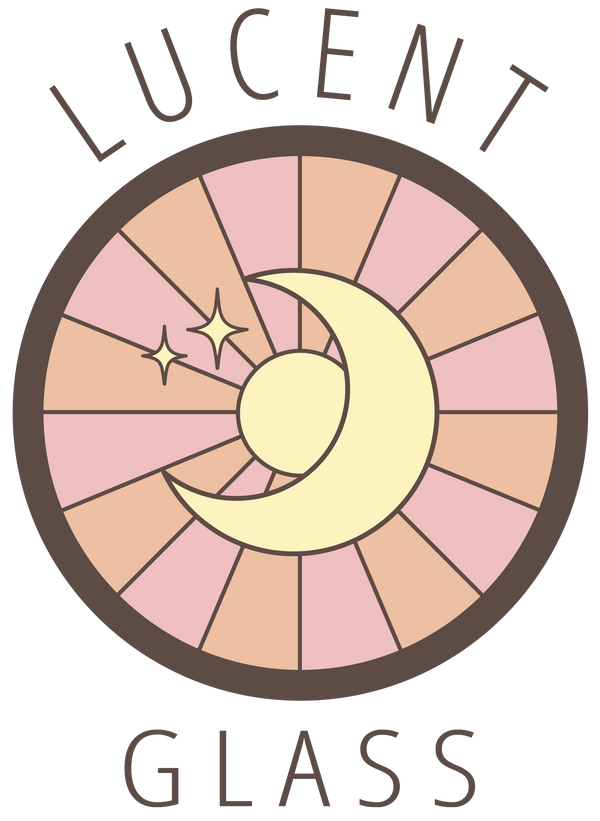
15. Understanding Firing Schedules: A Beginner’s Guide
Share
We want you to feel confident firing your own creations in your kiln. In this post, we’re sharing the firing schedules we use for our projects so you can achieve consistent, beautiful results at home. Firing schedules should always be tailored to the project size. We recommend to always record your result so you can repeat projects and learn from them. Make any changes to your rate or temp in increments of 5 degrees.
Structure of a firing schedule:
Segment: The order in which the steps of the schedule occur.
Ramp/Rate: Measured in degrees per hour, the ramp/rate is the speed at which the kiln heats up or cools down.
Target Temperature: The desired temperature the kiln reaches during each segment step
Hold Time: Also known as a ‘soak,’ the hold time is the length of time (defined in hours, or minutes) the kiln stays at a specific temperature before advancing into the next segment. This is to allow the glass to all reach the same temperature all the way through the project as different colours heat faster than others.
Segments explained
Initial Heat - Establishing even heat distribution in the glass is crucial at this stage. Adjust the heating rate based on the project's thickness to prevent thermal shock, which occurs between 0-1000°F. Err on the side of caution while trying out a new project. No harm in moving slower during this phase.
Bubble Squeeze - 1000F - 1225F - The glass begins to soften and move, holding here allows air to release between layers before fusing together
Rapid Heat - After the glass is heated evenly from the bubble squeeze, move quickly in and out of your target temperature to avoid devitrification
Rapid Cool to Anneal - 960F - Quickly drop to your first anneal zone and hold to allow the molecules in the glass to form back together. Err on the side of caution. Start at 1 hour and increase hold times for thicker projects. AFAP means as fast as possible.
Anneal Cool - 960F-700F - A controlled drop in temperature to estabilish equilibrium in the glass as it passed through the strain point.
Schedules
Below are our typically firing schedules for fused glass ornaments less than 6". We are using system 96 glass.
Contour Fuse is when the glass piece still has texture when finished firing.
| Segment | Rate | Top Temperature | Hold in Min |
| 1 | 300 | 1100 | 30 |
| 2 | 75 | 1275 | 30 |
| 3 | 500 | 1365 | 15 |
| 4 | 9999 (AFAP) | 960 | 45 |
| 5 | 75 | 800 | 15 |
Example project we made this this schedule:
3" Fused glass snowman ornament with 2 layers of glass

Full Fuse is when the layers melt completely together to form one layer of glass. We like to reach full fuse temperature gradually, extending our ramp and hold times—especially during the cooling phase—to give the glass molecules time to settle evenly preventing thermal shock.
| Segment | Rate | Top Temperature | Hold in Min |
| 1 | 200 | 1000 | 45 |
| 2 | 100 | 1225 | 30 |
| 3 | 500 | 1460 | 10 |
| 4 | 9999 (AFAP) | 960 | 60 |
| 5 | 75 | 800 | 20 |
Example project we made this this schedule:
3" Fused glass evil eye ornament with 5 layers that taper from a big to smaller piece of glass.

Slump is when the glass takes shape of a concave mold.
| Segment | Rate | Top Temperature | Hold in Min |
| 1 | 100 | 1000 | 30 |
| 2 | 200 | 1225 | 15 |
| 3 | 9999 | 960 | 120 |
| 4 | 30 | 800 | 30 |
Example project we made this this schedule:
A 5.5" round dish that was fired using a contour fuse then back into the kiln for the slump schedule above.

**Reminder to use a glass separator between your shelf/mold and the glass to prevent sticking. Learn more here: Blog no. 9 Glass Release Agents: Choosing the Right One for Your Project
There’s an element of exploration in every firing schedule. There’s no one-size-fits-all formula—your rate, temperature, and hold times will always depend on the size, colour, layering, and desired outcome of your project.
With experience (and a few test firings), you’ll start to recognize how your kiln and glass behave together. The key is to take notes, make adjustments, and stay curious—each firing is an opportunity to learn more about your materials and refine your process.
With gratitude,
Lucent Glass

1 comment
Thank you!!